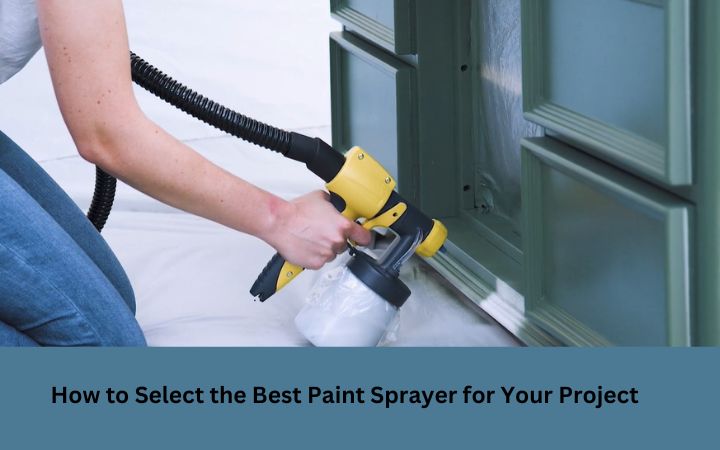
Key Highlights
- Learn how various types of paint sprayers can enhance your project’s outcome.
- Compare airless paint sprayers, HVLP sprayers, and compressed air sprayers to achieve the best results for your needs.
- Explore how different spray patterns and adjustable nozzles impact the finish you’ll achieve.
- Discover essential features to consider, ensuring you select the perfect sprayer for detailed work or larger surfaces.
- Understand which sprayer works best with your chosen materials, whether it’s for furniture, walls, or shutters.
- Save time and effort by selecting a sprayer tailored to your project’s scale and complexity.
Using a paint sprayer lets you finish painting jobs fast. It’s a more easy and quick way to paint when you compare it to brushes or rollers. The sprayer puts a smooth and even mist of paint on everything. This helps you cover each part with less work and gives a nice finish, like a pro.
If you want to work on house walls, furniture, or even shutters outside, the type of sprayer you pick makes a big difference.
There are different choices, like an airless sprayer or spray guns. This guide helps you to pick the right paint sprayer for your DIY or work project.
Understanding Paint Sprayers: What You Need to Know
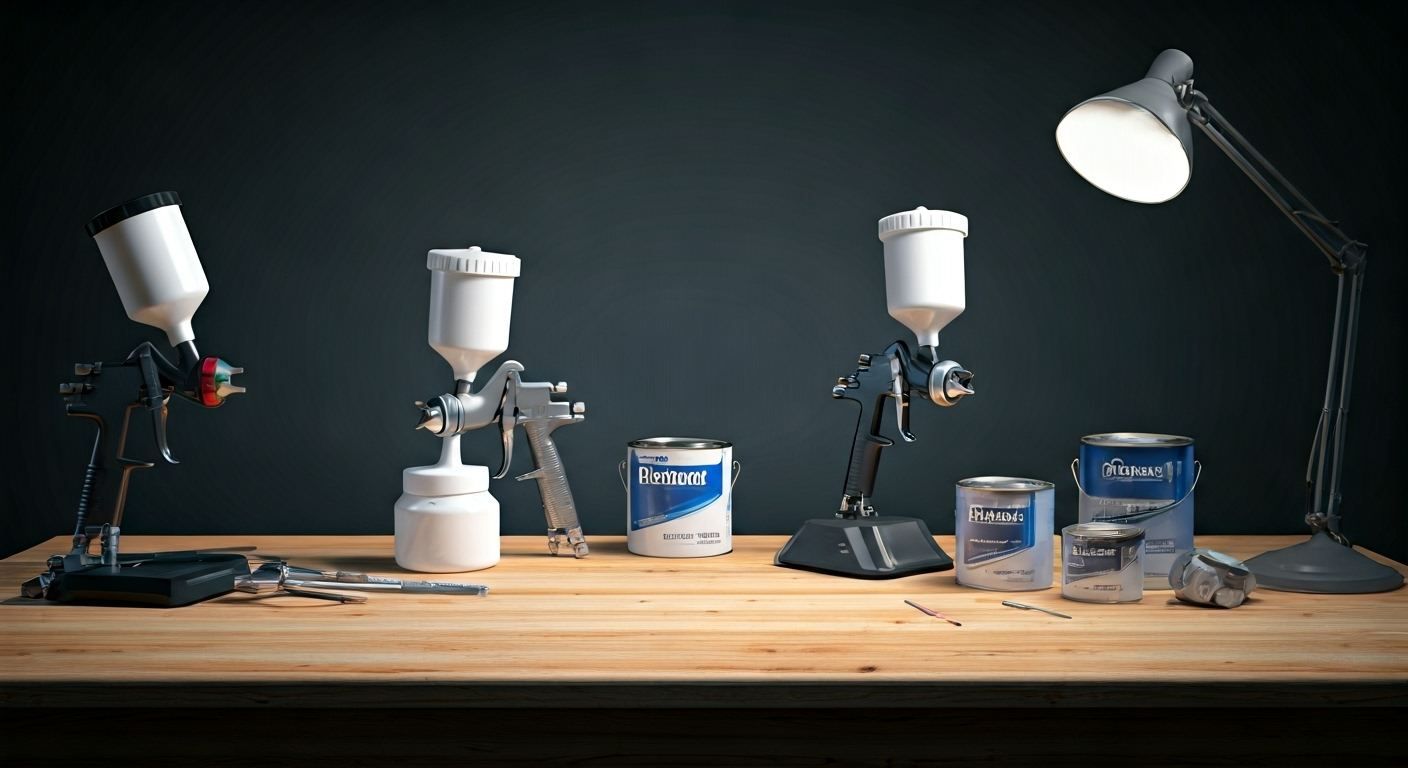
Paint sprayers make hard painting jobs easier. You can use them on rough areas or when you need to cover a big place. These are useful tools. There are many types of paint sprayer you can find. For example, there are airless sprayers, HVLP sprayer models, and spray guns that use air compressors.
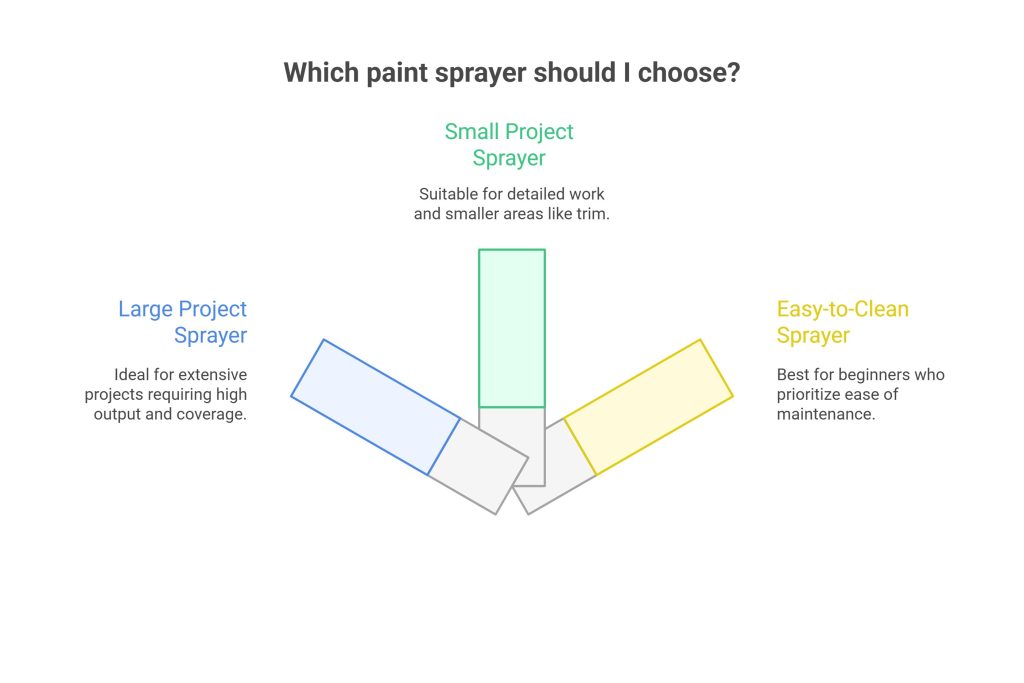
It is good to know how each sprayer works. You should also know what each one can do or what it cannot do. This helps you get a nice, smooth finish. You might need a paint sprayer for spraying latex paint on the wall. Or you could use it for detailed work on furniture. If you learn more about each kind, you can pick one that is best for your job. This way, you will get the result you want with your new HVLP or another type of paint sprayer.
What Is a Paint Sprayer and How Does It Work?
A paint sprayer is a tool that can help you finish painting jobs faster. It works by sending out small drops of paint through a nozzle. The sprayer uses pressure, from a compressor or airless system, to make sure the paint goes on evenly. This works well on both big and small surfaces.
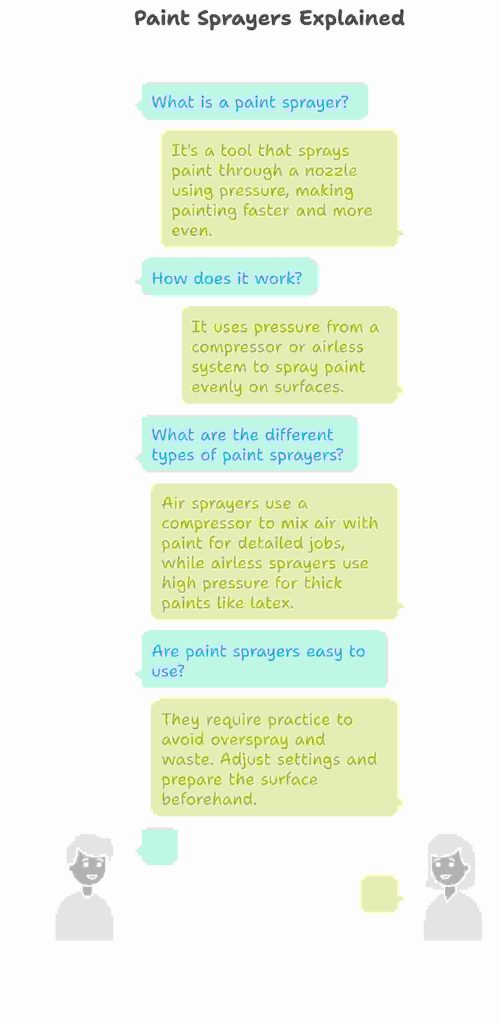
The spray gun is a big part of every sprayer and makes it easier to spray paint smoothly. Air sprayers use a compressor to mix air with the paint, giving a nice finish that works well for detailed jobs. Airless sprayers, on the other hand, use high pressure to spray thick paints like latex.
These tools are helpful, but you will need some practice to use a sprayer well. If you are not careful, you might get overspray or waste paint. It helps to adjust the settings before painting and get the surface ready. When you use the right methods, a paint sprayer does a better job than rollers or brushes, especially on uneven surfaces or things like plywood and shutters.
Benefits of Using a Paint Sprayer Over Traditional Methods
Switching to paint spraying instead of using brushes or rollers gives you the biggest advantage when it comes to speed and accuracy. Jobs that often take hours by hand can be finished in a fraction of the time with a sprayer.
Paint sprayers help you get a smooth and even look. Rollers or brushes can leave behind marks or streaks, but a sprayer gives a coat that is the same all over, even in corners or tight spaces. This can be good when you work on shutters, cabinets, interior walls, or textured exteriors. The sprayer gets paint into all the places that can be hard to reach with other tools.
Paint sprayers also make it easy to cover big areas fast. You can finish work like painting interior walls or outdoor fences with less effort and in less time. Still, you need to get things ready to avoid overspray, and it is key to clean the sprayer well after using it if you want it to work well next time.
Key Factors to Consider Before Buying a Paint Sprayer
Choosing the right paint sprayer means knowing what you need and picking a sprayer that fits. You should think about the size of your project, what materials you will use, and how often you plan to use the paint sprayer.
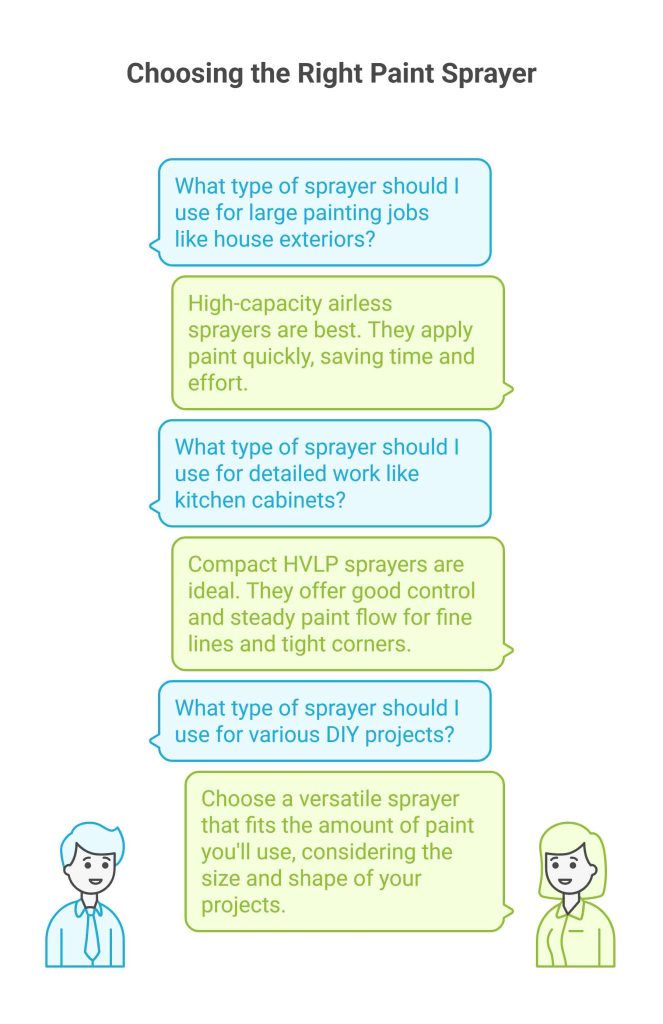
Some sprayers work best for big jobs. Other tools are good for smaller or tricky spots, like on trim or in corners. Think about how much work it is to take care of the sprayer and clean up after using it. This is really important if you are a novice and want a sprayer that is easy to use and simple to clean.
Project Size and Scope
The size of your painting job and the area you want to cover will help you choose the right type of sprayer. If you need to paint big spaces, like exteriors of houses or large interior walls, you should pick high-capacity sprayers. Airless sprayers work well here. They use a lot of latex or enamel and spread it fast, so you save both time and effort.
If you plan to do some detailed work, like painting kitchen cabinets or tricky trims, it is better to go with compact hvlp sprayers. With their good and steady flow of paint, you can manage the thickness well. This makes them the top choice for tight corners or fine lines.
For people who like to do things themselves and often work on different tasks—from shutters to furniture—it is smart to use a versatile sprayer. Pick a type of sprayer that fits the amount of paint you will use, so you do not have to stop often to refill. Be sure to think about the size and shape of your project before you choose. This way, your sprayer will help you work fast and get good results.
Types of Surfaces and Materials
Surfaces and materials play a big part in picking the right paint sprayer. If you have uneven surfaces, like textured siding or plywood, an airless paint sprayer works best. The high pressure and thick spray let it cover gaps and bumps that rollers or brushes miss.
When your job needs detailed work, such as painting cabinets or shutters, go with HVLP sprayers. These give you more control. HVLP sprayers lay down a fine coat that helps you get even coverage, even on tricky shapes.
For metal that has rust on it, use air sprayers with enamel or rust-preventive paint. This type of paint sprayer gives you even coats that do not streak. Always make sure your material and paint are right for each other so you get good results.
Frequency of Use and Maintenance Needs
High-frequency users need to choose paint sprayers that make maintenance easy. If you do DIY projects often, look for a sprayer with a garden hose attachment. This makes cleanup quick and simple. It saves you time and helps your sprayer last longer.
If you use a sprayer now and then, renting can be better than buying. Beginners who do not know much about how sprayers work might like small HVLP sprayers. These are easy to use, do not need much cleaning, and are simple to take care of.
Taking care of your sprayer matters for everyone. If you leave paint inside, it can block up the hoses and nozzles. This is why it is important to clean them well after every use. Think about how often you will use it to help pick the best sprayer that is both reliable and easy to care for.
(hvlp sprayers, sprayer, hvlp, hose, diy, cleanup)
Exploring the Main Types of Paint Sprayers
Paint sprayers come in a few main types that should fit the needs of most people. The most common are air sprayers, HVLP sprayers, and airless sprayers. Each option has its own good points and downsides.
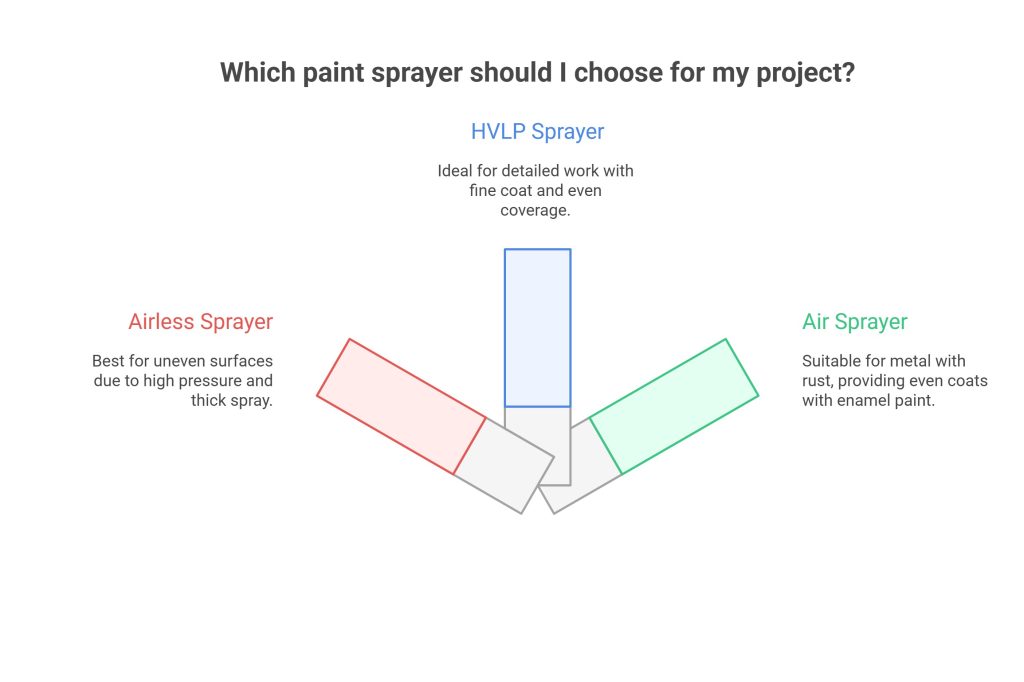
Choosing the right sprayer for the job depends on the size of your project, the type of surface, and the finish you want. Air sprayers use compressed air to give a smooth and even coat. Airless sprayers are good if you need to cover a large area fast. HVLP sprayers work well for detailed work and give you good control.
Airless Paint Sprayers: Pros and Cons
Airless paint sprayers are very fast, and they work well for big jobs. They put paint on with a lot of pressure. This means you can get a smooth look, even if the the surface is rough or bumpy. The biggest advantage is how well they cover big areas. But there is also a problem. These tools can make too much overspray, so paint can end up in the wrong place. This leads to more mess and wasted paint. If you are new, learning how to control the spray pattern will take some time and practice. You need to find the right balance of pressure and how you move the sprayer. This will help you get the best results without a lot of extra cleanup.
HVLP (High-Volume Low-Pressure) Sprayers: Pros and Cons
HVLP sprayers are great for small projects and detailed work. You can use them to get an even spray pattern, especially when working on interior walls and kitchen cabinets. The biggest advantage is that these HVLP sprayers make less overspray. That helps you save on paint and other materials. These sprayers work well with different kinds of paint, giving the finish a smooth look.
But you need an air compressor to use them, and that can take away from portability if you want to move around. Because HVLP sprayers work at a lower psi, it can take more time to get the job done, especially if you have a big space. While these are good for furniture and kitchen cabinets, they do not work as well on uneven surfaces or for heavy-duty jobs.
Compressed Air Paint Sprayers: Pros and Cons
Compressed air paint sprayers use air compressors to spray paint. They give a very smooth finish, so they are great for cars and big work jobs. They work well with enamels and lacquers. The paint gets spread out in a soft, even way.
But even people who know what they are doing can get overspray if they do not cover the area well. You can use these sprayers inside or outside. Still, you must get the surface ready to stop paint from blowing everywhere.
You have to set the right PSI on these sprayers to get the best results. People with a lot of experience like how you can change how it works. If you do not use one often, you might want to go with something easier.
Important Features to Look for in a Paint Sprayer
Many features of a paint sprayer can change how well your painting turns out. The adjustable pressure controls let you change the flow of paint. This is helpful for many surfaces like smooth interior walls or rough exteriors. You should also look at the spray patterns and nozzle options on your sprayer. This way, you can do small, detailed work or finish large projects with the same tool. Keeping the sprayer easy to clean and looking after it is important too. If you take care of your paint sprayer, you get the best results every time you use it.
Adjustable Pressure Controls
Being able to change the pressure on a paint sprayer is important to get the finish you want. When you have higher psi, the paint spreads more in the air. This is good for big projects or when you spray on uneven surfaces. If you use lower settings, you can control the sprayer better for detailed work.
This adaptability helps you handle overspray and gives better coverage on things like kitchen cabinets or plywood. You can also change spray patterns for the best results. Being able to adjust pressure is great for novice users and those with more experience. Everyone can use these features to get the job done well.
Spray Patterns and Nozzle Options
Different spray patterns and nozzle choices can really change how your painting project turns out. When you have spray patterns that you can change, like fan, round, or horizontal, you have the power to use them on many types of surfaces and shapes. This helps you get even coverage. If you want to do detailed work, it is best to use a narrower nozzle. If you want to cover a large area, a bigger nozzle will work well. When you pick the right spray pattern and the right nozzle, you can use the spray in a way that keeps overspray low. This helps you get a smooth finish on furniture or walls. You will find that this way also saves time and gives you good results.
Ease of Cleaning and Maintenance
A paint sprayer that you take care of will last longer and work better. If you clean it often, you stop paint from building up inside, so it keeps working well each time you use it. With airless sprayers, you should flush out the sprayer using the right solvent. This helps protect the parts inside and stops clogs from happening. For HVLP sprayers, focus on cleaning the nozzle and hose. Give them a good rinse so they keep working the way you want. If you know how your sprayer is built, you can make your cleaning routine easier. This means you will get smoother results during detailed work and have fewer problems with your sprayer on your next job.
Beginner’s Guide: How to Select and Use a Paint Sprayer
Picking the right paint sprayer is key to getting a smooth finish on your walls, no matter if you are working inside or on exteriors. First, look at what you need for your project. This means finding out the type of paint you want to use, checking surface details, and thinking about the spray pattern you want. Then, match the sprayer type, like HVLP or airless, to the project so it fits both small projects and bigger jobs. When you have compared features and set your budget, get your space ready for a test. Adjust the pressure controls on the sprayer to get the best spray pattern with little overspray. This way, you help make sure your work comes out clean and even.
What You’ll Need to Get Started (Equipment & Safety Gear)
A well-prepared area and the right tools are very important when you use a paint sprayer. Start with a good sprayer. You can pick from airless or HVLP sprayers, as they can really change how your project turns out. Safety is also key, so use goggles, gloves, and a mask to keep safe from overspray and any small things you might breathe in. It helps to place drop cloths and painter’s tape to keep the area clean and make less mess. Also, use the right accessories, like hoses, nozzles, and a good air compressor, to help you work better and get that smooth finish you want.
Step-by-Step Guide to Choosing and Using a Paint Sprayer
Choosing the right paint sprayer starts with some planning. First, you need to look at what your project needs. This includes the type of paint you will use, like latex, enamels, or lacquers. Think about how big the area is that you want to paint.
Then, pick a sprayer that fits what you need. HVLP sprayers and airless sprayers work for different jobs, so pick one based on the job size and the finish you want.
After you pick the best sprayer, get to know how it works. Look at features like adjustable pressure controls and nozzle choices. Get your work area ready before you start. Try a test spray so you can see how it will go and make sure you get good results.
Step 1: Assess Your Project Requirements
Figuring out what you need from a paint sprayer is the first step to picking the right one. You should start by thinking about the size of the job. Is it small projects like painting kitchen cabinets, or do you need it for big jobs like outside the house? Next, you need to think about the type of paint you will use. Some sprayers work better for latex, while others are better for enamels. You also have to look at the surface you will paint. If it’s rough or uneven, you may want a sprayer with a spray pattern that works on lots of different surfaces. Think about the time you have and the look you want, too. When you keep all these things in mind, you can pick a paint sprayer that will help your project come out well.
Step 2: Match the Sprayer Type to Your Project
Picking the right type of sprayer can really help you get the best results and make your work faster. When you have small projects like painting interior walls or kitchen cabinets, an airless paint sprayer is a good choice. It gives you speed and a smooth finish, even on uneven surfaces. But if you need to do detailed work, like painting shutters or plywood, HVLP sprayers help you have more control and cut down on overspray.
Before you start, make sure you know the needs of your project, like which type of paint to use and what spray pattern you want. Doing this will help you get the best results in a lot less time.
Step 3: Compare Features and Set Your Budget
When you want to get the best results with your paint job, it helps to compare the features of each sprayer. Look at things like pressure you can change, how the sprayer sprays, and which nozzle you use. These all matter for how the work turns out and how fast you get it done. The price for a sprayer can be different from one to another, so decide how much you want to spend at the start. That way, you can keep to your budget. Pick a sprayer that gives you a good mix of quality and price. The right equipment will save you time and help you get a better finish. So, it is worth it in the end.
Step 4: Prepare Your Area and Test the Sprayer
Safety and keeping things clean are very important when you get ready to work. Start by moving any furniture out and cover the floors with drop cloths. This helps stop paint from landing where you do not want it. Make sure the room has enough fresh air, since paint fumes can be strong. When everything is set up, do a test spray on a piece of cardboard that you do not need. Use this time to check the spray pattern and set the pressure just right. This will help you get the best results when you start your real work. If you follow these steps, you will have a better and smoother painting process.
Conclusion
Choosing a paint sprayer that fits your needs can help you get the best results on any job. It does not matter if you are painting a big area or working on a small DIY project. To get a smooth finish, it helps to know about different sprayer types like airless and HVLP sprayers. Look at features such as adjustable pressure controls and the type of nozzle. These can make your work smoother and the job easier. When you take time to pick the right sprayer, you cover surfaces quickly and need less time for cleanup. Enjoy painting and see your ideas take shape with less effort.
Frequently Asked Questions
What type of paint sprayer is best for home use?
The best paint sprayer to use at home mostly depends on the size and type of your project. If you have a big job to do, an airless sprayer can help get it done faster. When you want to do more detailed work, HVLP sprayers are a good choice, as they let you be more precise. You should also think about how easy the sprayer is to use, clean, and take care of. This will help you get good results every time with your HVLP or other sprayer.
Can I use any paint in a paint sprayer?
Not every paint will work well with a sprayer. Paints that are thin, such as stains, latex, and acrylics, are the best ones to use. If you use thicker paint, you may need to thin it before use. Always check the manufacturer’s tips or rules so you know if the paint fits your sprayer. This will help you get the best results.
How do I avoid overspray and mess?
To keep mess and overspray down when you use a paint sprayer, be sure to mask the area the right way. You also need to stay the same distance from what you are painting. Adjust the spray pattern on your sprayer to match what you need. It is good to work in a place with fresh air. You should also use drop cloths to keep the area around the job safe from paint.
Are paint sprayers safe for indoor projects?
When you use paint sprayers inside, make sure there is good airflow. This helps lower the number of fumes in the air. Pick paints that have low VOC to be safer. You can also use HVLP sprayers since they help cut down on overspray. Always wear safety gear while you work. It is a good idea to cover all furniture to keep your project area safe and clean.
